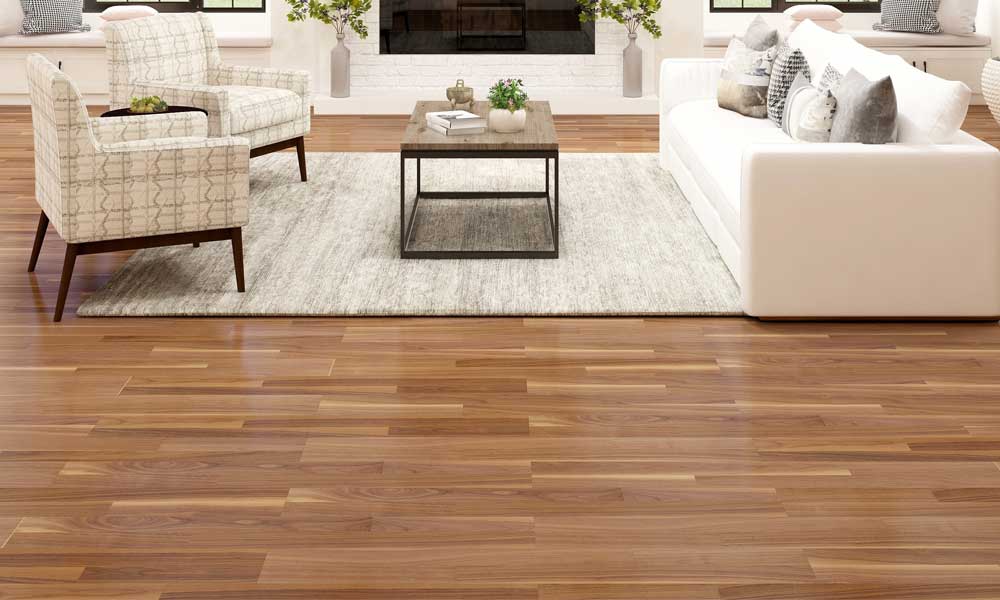When looking for new flooring, there are a variety of options to choose from. Which one is right for your San Diego home? You may have heard a bit about vinyl as a versatile and cost-effective option. What is vinyl flooring, though, and is it right for you? What are the advantages and disadvantages? Here’s a brief guide to vinyl flooring and what you need to know.
What Is Vinyl?
Vinyl flooring is made from polyvinyl chlorine resins, commonly known as PVC. It’s durable, but also flexible, making it feel better underfoot than many harder materials. Vinyl planks (also called LVP, or Luxury Vinyl Planks) are manufactured in several layers, each serving a different purpose.
First is the backing layer. Made of hard vinyl, it’s waterproof, to protect the subfloor from moisture. On top of that is the core, which is made of a more flexible vinyl—though still designed to be strong and durable.
The next layer is the pattern. A high-resolution image of whatever pattern or style of flooring you want is printed and laid on top of the vinyl core. The image can be virtually any style or pattern of flooring you want, from hardwood to stone to tile, and more.
Finally, on top of the pattern goes the wear layer. It’s transparent, but stain and scratch resistant, to stand up to wear and tear over time. The result is a durable, flexible vinyl plank that can be installed in virtually any room.
Advantages of Vinyl Flooring
In addition to being one of the most inexpensive types of flooring to install, vinyl is also very versatile. The high-resolution printing means it can look like anything at all. Most common is hardwood, but even then, there’s a wide variety of wood colors and textures to choose from, from a dark, rustic look to a bright, modern aesthetic. You can also get tile in any color or pattern that fits your décor. For a little extra money, you can even make custom vinyl planks, printed with any image you want. The only limit is your imagination!
Vinyl is also super easy to install. You can do it yourself in an afternoon. The vinyl planks snap together, without the need for any glues or adhesives.
Finally, vinyl flooring is durable. It will stand up to heavy foot traffic and basic wear and tear, and typically lasts between 10 and 20 years. Plus, it’s very easy to keep clean. It’s water-resistant, so it doesn’t stain. Spills come up easily, and dust comes up with a quick sweep.
Disadvantages of Vinyl Flooring
One of the main drawbacks to vinyl is that it isn’t great for the environment. The manufacturing process of certain types of vinyl causes it to emit VOCs – Volatile Organic Chemicals, which seep into your air over time and are harmful to your health. It is possible to find VOC-free vinyl, but even then, there are problems. The material isn’t recyclable, and it doesn’t degrade, so when you finally replace it, it will end up sitting in a landfill.
The other problem is repairs. Vinyl is designed to be durable, but if planks to get cracked or broken, they can’t be fixed. You’ll either have to replace them, or bear with the broken floor.
So is vinyl flooring the best choice for your San Diego home? If you’re looking to save a little money and a lot of hassle while still getting the perfect style and aesthetic for your décor, then it just may be.
Contact us, and let us help you decide what kind of flooring will work best for you!



